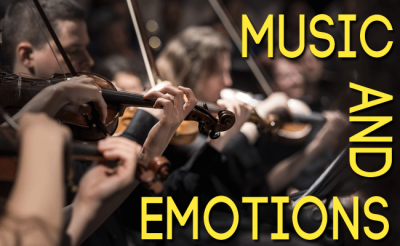Functions of Music in Film and Video
 Music is an essential part of film. Nonetheless, often we are not even aware of the music playing in the background. However, if we realized on how many levels it influences us and our perception we would probably be amazed.
Music is an essential part of film. Nonetheless, often we are not even aware of the music playing in the background. However, if we realized on how many levels it influences us and our perception we would probably be amazed.
>> Check out My Music on Audiojungle <<
A brief history of music in film
In the beginning of cinema in the late 19th century the projector of film made so much noise that music was necessary to overpower it. Also, film was silent and music was used to explain the actions taking place on the screen. When the sound film was invented in 1923 dialogs could finally be heard and messages could be delivered verbally. Through this invention it turned out that music was sill an essential dimension of film and could not be missed. Then, music was established once and for all as a functional and aesthetic part of film.
To learn more about the effects of music, I researched and found seven functions of music for film or video described in the book Music and Emotion:. In the following, I present these seven functions to you by means of a short description and an illustrative film clip. Try to become aware of the effect of music in this clips and in the next movie you are going to watch. Share your insights in the comments bellow.
Seven functions of music in film and video
1. Music provides continuity between shots
For example, in a dialog among two people where both faces are filmed in close-ups and there is no direct visual connection between the two shots music can serve as a glue that provides continuity.
Probably everybody knows this scene of the film Rocky I. With the music playing this training scene becomes a whole and not just single consecuetive shots.
2. Music directs attention to important features
Music directs attention to important features through structural or associational congruence: The correlation of structural as well as elements of association between music and film leads to a focus of attention on these elements. To give an example of structural elements one could think of temporal queues that match between music and film and therefore catch the audience attention.
Imagine a setting where a fishbowl and a cradle are evenly important visually. A soundtrack of a lullaby probably will direct the viewers attentions to the cradle rather than the fishbowl as it has associational congruences.
3. Music induces emotions
It is shown experimentally that music has the ability to evoke emotions and moods. In film this ability is used frequently. For example, in the opening credits of a movie to set a mood in order to introduce the genre of the film.
Best example I can think of: The opening creditd of Alfred Hitchcock's Psycho
4. Music communicates meaning and furthers the narrative
Music can add a dimension of happiness, sadness, fear and anger to a fairly neutral scene. It therefore conveys meaning even when there is no meaning in the visual realm. Music furthers the narrative through adding another layer of information. The viewers can use the musical layer to make sense of the narrative as well as to make predictions about how it unfolds further.
5. Association in memory
Through the use of the technique leitmotif music can function as a symbolization of future and past events. A very good example for that is the soundtrack ”by John Williams. Within this composition for the young and innocent Anakin Skywalker a leitmotif of his future dark and evil self, Darth Vader, is introduced subtile but yet with a great impact for the ones who know. Moreover, music can also queue memories of moods like, for example, the Waterphone is a symbol of horror movies and with it a queue for the corresponding feeling and mood.
Especially listen from 2:19 min where the theme of Darth Vader is hinted
The waterphone has a strong association with horror movies
- HORROR SOUND. The unique instrument --- Waterphone creates a weird sound that could be heard in horror movie and other music media.
- STAINLESS IRON. All body is made of stainless iron, with total 30 metal sticks around. Body Diameter: 10.24in (26cm), Height of product: 15.75in (40cm).
- PLAYING THEORY. Add some water from the tube to the bottom, use implement to vibrate the sticks, and shake the body, then hear the sound. Also, you can try your own idea of playing.
- HAND-MADE PRODUCTION. The product is totally handmade, and for precision, each item takes 3-5 days to produce.
6. Music heightens absorption in film
We have seen that music directs attention, induces emotions, communicates meaning and awakes association in memory. With all that the level of absorption in film dramatically increases.
Sorry for all the horror movies but: directs attention? Yes! Induces emotions? Definitely! Communicates meaning? Yap!
7. Music heightens the aesthetic effects of the film
Film music in itself has a high aesthetic value. Nowadays, most of the soundtracks for film are sold on CD apart from the context of film. With that in mind, it is only logical to say that music adds to the aesthetic value of a movie.
Fantasia: A movie that I watched several times in my childhood. A major reason I liked it was the beautiful classical music of it.
This article is inspired by
Handbook of Music and Emotion: Theory, Research, Applications
by Patrik N. Juslin (Author), John Sloboda (Author)
Check out the table of content to get an overview of this field. This books goes in depth into the mysterious field of music and emotions in the context of film as well as other fields of applied music.










Leave A Comment